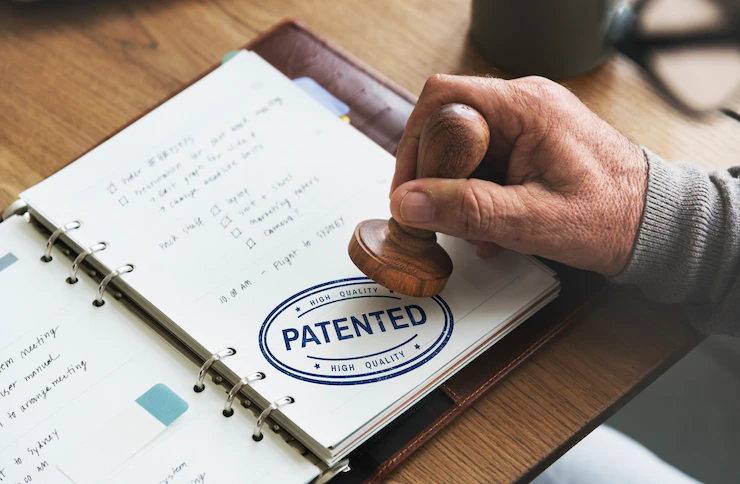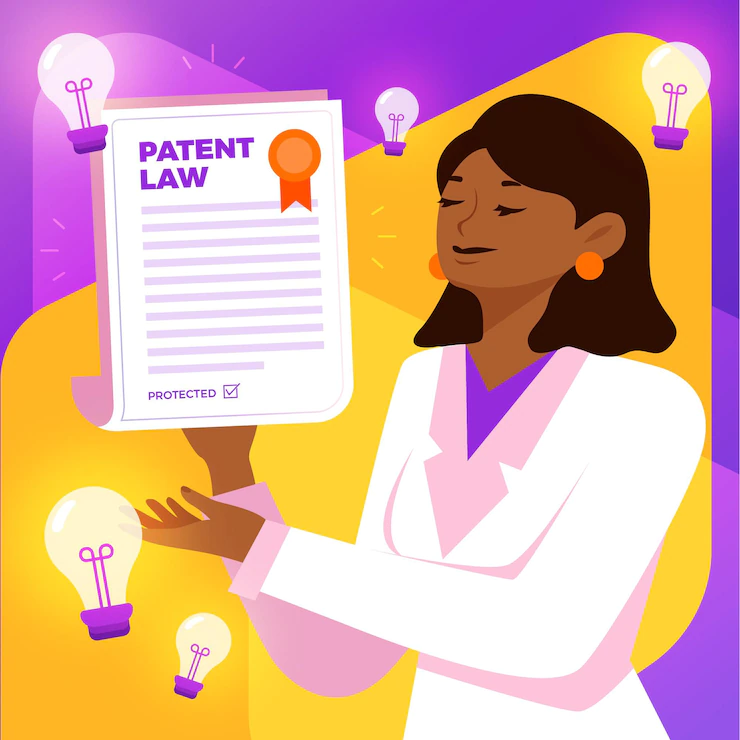What You Need To Know Before Filing Patent Applications
Every day, innovators and inventors work on new and exciting projects. They leverage invention design to develop new solutions. To arrive at these solutions, innovators combine conventional and advanced research methods. The final result is a functional product or service that can solve existing consumer problems and create revenue for the idea originator. Inventors and industrial design companies need to protect their ideas from competitors. One way to safeguard unique inventions is by obtaining a legal patent from a national or regional office.
Individuals or companies can apply for a patent if they are working on:
- New products- Dealing with an invention that has never been developed anywhere else in the world.
- Innovative products- Upgrading existing solutions or products using advanced technology or materials.
- Useful inventions- Patent applications are allowed for products that contain additional functionalities that improve the functionality and usability of existing products or services.

Patents are issued after rigorous evaluation of application documents
In this blog, we discuss everything around patent applications. It highlights:
- When and how to file for provisional patent applications
- Things to include in patent applications
- Typical patent application processes (local, regional and international)
- Types of patent applications
What are patent applications?
Patent applications are formal documents submitted to the patent office requesting approval for an invention and an award or grant of a patent. These documents contain claims and specifications about the operability of a product or mechanism. Patent offices have the jurisdiction to receive, review, grant or deny patents within a specific geographical area. In the US, all patent applications are submitted to the US Patent and Trademark Office (USPTO).
Patent application timelines can be lengthy. The granting or issuing authority comprehensively evaluates the specifications of the claims and conducts extensive research regarding the factuality of the information provided. Patent applications are unique; no one can launch a claim for an already patented solution.
Inventors may submit patent applications in person or enlist the services of an attorney or patent agents who draft the legal documents on behalf of individuals or companies. Some inventions are useful beyond national boundaries. In such a case, the inventor is required to send patent applications to regional authorities. The European Patent Office is an example of a regional or international patent office.
Drafting patent applications follows specific steps or procedures established by the issuing authority. The patent office checks if the specifications and legal documentations comply with the existing issuance standards. Afterward, the patent office grants a patent if the requester and the product fulfill all the stated requirements.
Patent applications contain technical details of the proposed product. Therefore, when drafting the submission documents, the patent attorney or contracted agent should possess relevant experience in the particular field. The application does not necessarily have to include fine details like manufacturing blueprints. Finer details like part tolerances, material specifications and dimensions will only be necessary if they affect the usability and functionality of products. The drafting party should understand that patent evaluations are conducted by judges who may or may not possess the technical skills relevant to the invention. Therefore, the patent attorney should draft the application in a language understandable by individuals with minimal knowledge of the subject matter.
Benefits of patents
Inventors who are granted patents enjoy plenty of benefits. Owning a patent means an inventor has exclusive rights to a design or product. That way, they can sue for infringement of intellectual property rights should another entity copy and use the design or product for their benefit without direct authorization from the inventor. Why should you consider patent applications when working on new and revolutionary products or ideas?
- A patent gives the inventor exclusive rights to a specific product. The patent owner can allow or deny other entities from using or reproducing inventions.
- Individuals whose patent applications are accepted extend their research into potential money-making innovations. In the process, they manage to introduce newer solutions to benefit humanity.
- Patents permit owners to license partners to manufacture, market and distribute products under certain conditions. By doing so, inventors can ramp up production in different regions (countries) and reach more customers.

Patent laws vary from country to country
Types of patent applications
There are different patent applications, each proving beneficial under diverse circumstances. Patent application procedures for each type vary and offer the inventor specific benefits. The general categories of patents are:
Provisional applications
It is an application that an inventor submits to the patent office to obtain a patent filing date. Under USPTO regulations, provisional patent applications are valid for one year. Provisional patent application documents can form part of the standard application should the inventor pursue the application. Provisional patent applications can be filed at no expense. The application procedures are easy-to-follow and do not require complex documentation. Provisional applications do not give the inventor any rights to deny other parties the permission to manufacture or modify a design, mechanism or product.
A provisional patent application has details like:
- When an invention was made
- Who invented the product or solution
- How to use the invention or how it works
Standard applications
A standard application contains the details of the invention claim, a well-written description of the invention, and the details of an inventor. Standard or non-provisional applications have detailed drawings of the claimed invention. The patent office evaluates the contents of standard patent applications and decides whether to grant a patent or not to the claimant.
Divisional application
Once in a while, inventors may opt to split or divide existing patent applications. The content of the new application is derived from the original patent applications. These changes do not affect the filing and priority dates of the original or parent patent application. A divisional patent application may be necessary for situations where the patent applicant receives an objection to the unity of an invention. In case of such application objections, the divisional patent application protects new or additional inventions.
Continuation Application
As mentioned earlier, provisional applications are valid for a limited time. However, once the grace period elapses, inventors may opt to continue with the application. The continuation application is a convenient way for the inventor to utilize materials from previous patent applications or to refine application documents to reflect technological changes or advanced proof of concept.
Contents of provisional patent applications
Some elements must be in the application document. The order and prioritization of these elements depend on the patent laws used in different countries or regions. Here is a look at each element
Specification of the patent
It tells a brief story about an invention and its uniqueness. The specification highlights how the product or solution works and is structured in a way that is understandable to anyone knowledgeable in that field. The specification highlights replication of the invention and methods to achieve optimum performance. Under some patent laws, failure to disclose how to use inventions could lead to the revocation of patent rights.
The specification provides details like:
- The title or name of the invention
- Background- details about prior inventions
- Summary of the invention. It extends the content in the background section and describes how proposed systems address the challenges that prior solutions cannot solve.
- The features of the product. The details should make sense to skilled individuals and ordinary laypersons.

Contents of patent application documents should be precise
Patent application processes
As mentioned earlier, patent application processes are lengthy. The first step is to prepare legal documents associated with the invention. The application process terminates at the grant or denial of a patent. Typical patent applications occur in the following stages.
Drafting a patent specification
Patent specification highlights features like the title, background and comprehensive description of inventions. The specification also describes the scope of protection and highlights pertinent invention claims proposed by an innovator. The document may contain graphical images that aid in explaining the viability of the invention. Patent specifications vary depending on the technicality of the product. Some specifications can include things like gene sequences or computer codes.
The requirements for drafting patent specifications vary from one office to the other. These offices establish rules that describe how to organize documentation, the type of fonts to use, and appropriate paper sizes. Most patent offices require claimants to provide an abstract that enables the evaluation teams to expedite research and evaluation. National and international patent offices seldom provide a modification window. Once the specifications are submitted, it is unlikely that they will allow edits or modifications. Therefore, try to put everything in order at the first trial.
Claim
A claim to a patent specification broadly describes the limitations of using the invention. It highlights the legal implications of violating patent provisions and instances amounting to patent infringement. A claim is amendable after submission to the patent office. The modification allows the inventor to expand or reduce the scope of the invention’s protection per the country’s or regional patent laws.
Patent claims may contain several provisions that protect individual features of the invention. Some of the claims are hierarchical, while others are independent. Amendment of patent claims has a limited time frame. In the US, inventors can modify patent claims within the first two years of patent issue. The amendment limits the scope of patent modification, and inventors are prohibited from broadening the scope of protection beyond what was defined originally.
Filing Date
The filing date for patent applications sets the last day beyond which public disclosure of the invention details cannot be treated as prior art. The first person to file a patent application receives legal protection from the patent office as the original bearer of the product or solution. To obtain a filing date, they should submit all the requisite documentation and prove that their innovations comply with the regulations of the governing patent office. The requirements for filing dates vary from one country to the other. For instance, one can obtain a filing date without submitting an abstract or claim in the UK. Filed patent applications are usually assigned specific application numbers to assist in subsequent processes.
Priority Claim
A claimant may opt to apply for an invention priority claim to beat the competition, take advantage of earlier filing dates and prepare for prior art disclosures. A priority claim increases the probability of inventors and companies obtaining patents. Different patent offices have established unique priority claim rules. These regulations must conform with provisions of the Paris Convention for The Protection of Industrial property.
Security clearance
Inventors may require security clearance from specific countries before submitting patent applications. The purpose is to protect host nations from security threats by controlling the spread and accessibility of publications relating to advanced technologies used for warfare. Filed patent applications are thoroughly reviewed to ascertain potential threats. Before a security clearance is issued, the inventor must sign a secrecy order. These orders prevent individuals from filing patent applications outside the country.
Publication of patent applications
Most patent applications are published 18 months after the defined priority dates. The content of patent applications remains confidential before this timeframe elapses. Patent applications can be made public if the patent office receives authorization from the inventor or agents. The official publication date becomes prior art for similar applications in patent offices worldwide.
Patent pending
A patent is categorized as pending if the filed application is found to infringe on another invention. Different patent offices have developed regulations for marking and communicating patent infringement cases to third parties.
Search and Examination
Patent application searches are allowable in certain jurisdictions. This is relevant if another inventor has made a formal request for the office to reveal prior art. The patent office then examines the filed documents to establish if they comply with patent approval requirements. During the examination, the patent office informs the inventor of contentious issues and gives them a window to defend their claims. Patent application examination or patent prosecution is iterative, and the parties (claimant and office) share feedback until the claimant overcomes the objection. If the opposite happens, the inventor is denied the patent.
Final Words
There has been an upward trend in patent applications in different offices globally. It indicates increased research efforts by inventors and industrial design companies. More inventors are appreciating the role of patents in protecting them from unscrupulous businesses and competitors who copy ideas without the inventor’s approval. When drafting patent applications, enlist the services of an experienced patent attorney to ensure the correct documents are submitted.
